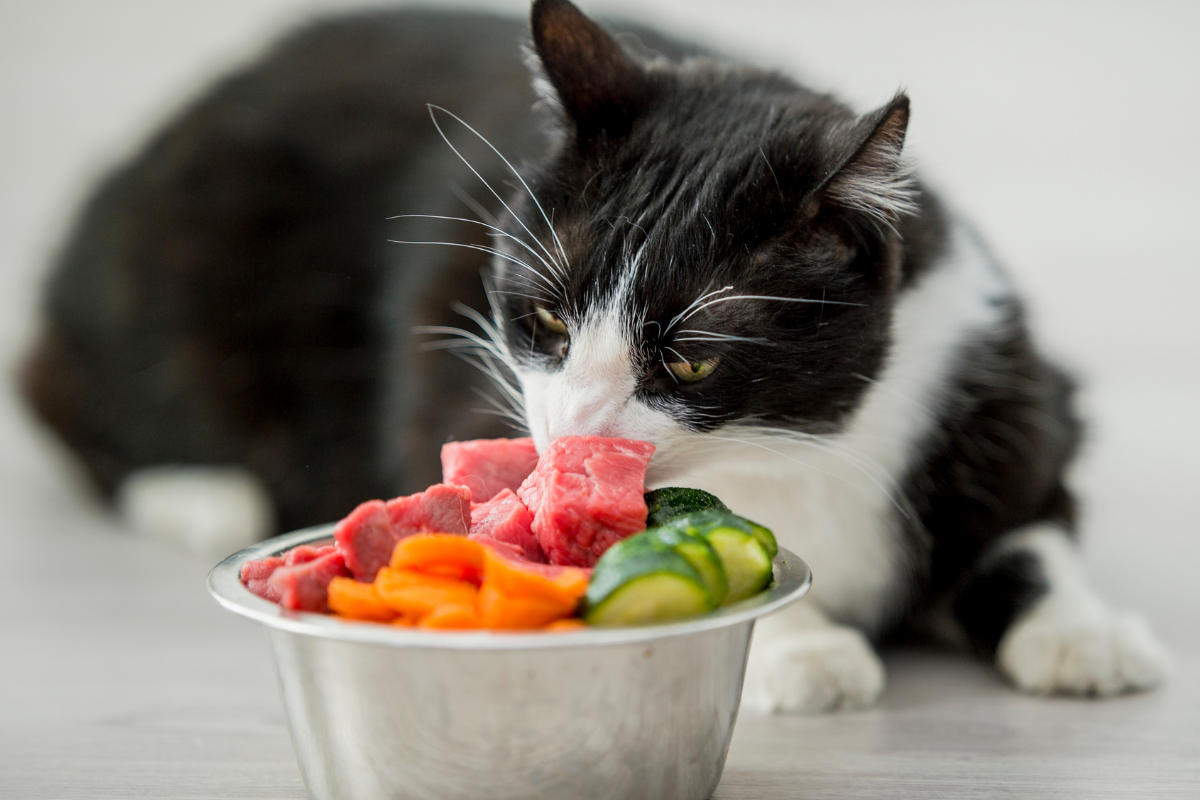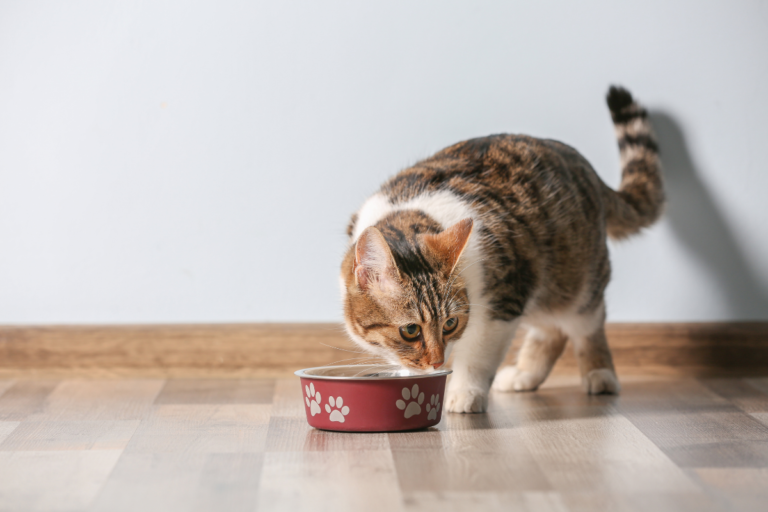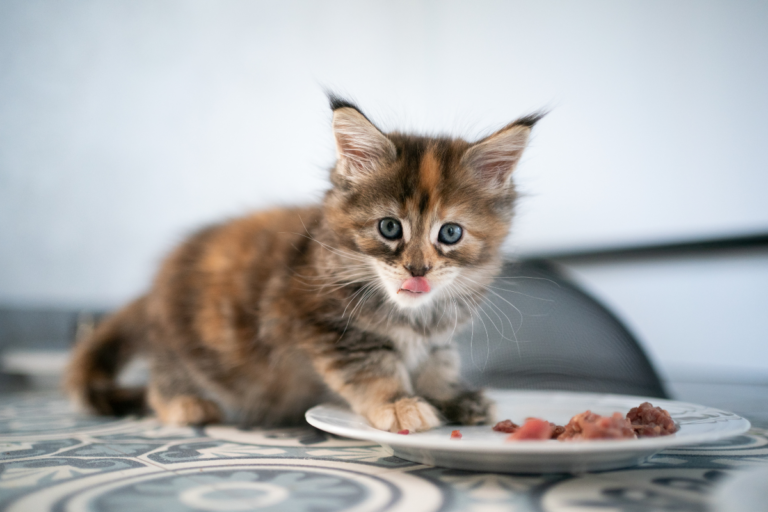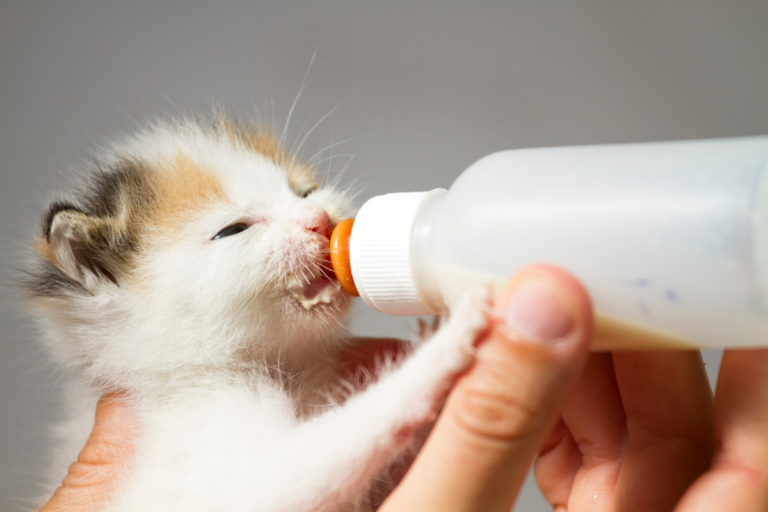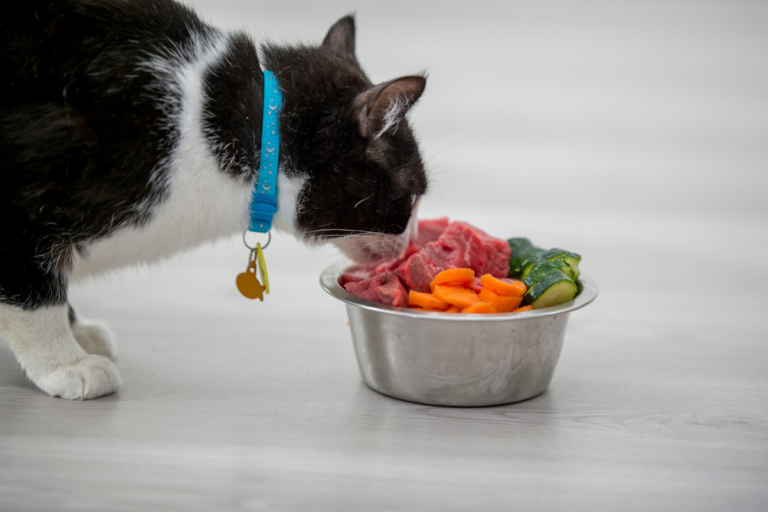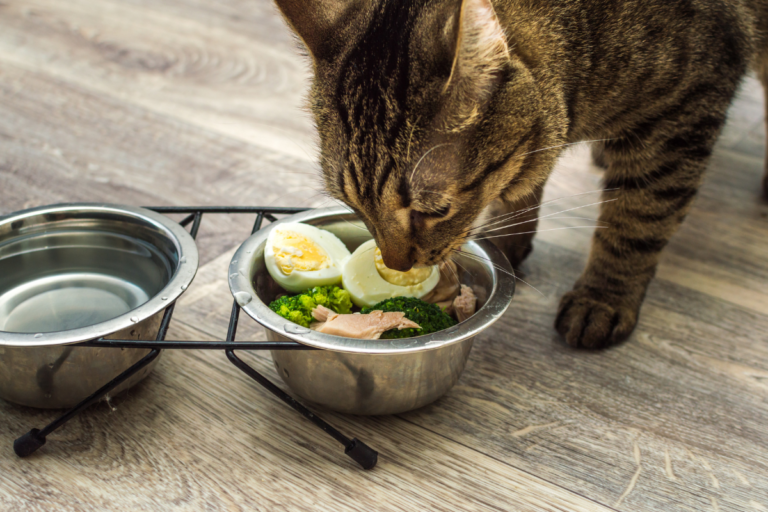Furever Young: Senior Diet Tips to Keep Your Cat Spry
Senior Cat Nutrition
Understanding Aging Cats’ Dietary Needs
When our furball friends hit their golden years, it’s snack time with a twist. Feeding an older cat becomes a balancing act, like a see-saw of belly rubs and bowls.
Cats joining the senior club (ages 7 to 11) might start wearing those extra laps like a winter coat. Less zooming around and a slower metabolism can sneak up on their waistlines. But once they stroll past 11, keeping their sleek physique might need a little nudge. Senior cat chow with a tailored nutrient twist can help them strut their stuff like the proud felines they are.
| Age Group | Key Dietary Needs |
|---|---|
| 7-11 years | Watch out for those snack-time calories |
| 11+ years | Pump up that nutrient checklist |
-
Caloric Needs: It’s a calorie tango. Some cats are fine dining connoisseurs, while others are more couch-potato-inclined. Get ’em stepping on the scales now and then to sidestep pounds of fluff or sudden slimming. I tweak my kitty’s plate according to his dance moves (Vetster).
-
Protein: Meaty morsels matter! Cats, being the carnivores they are, have a thing for protein. It keeps their muscle engines purring. Think carnivore cuisine sans the fancy side salad. Especially vital for those who might be losing some feline finesse in their senior years.
-
Fiber and Calories: Some senior fare says more fiber, more fun, but its magic isn’t locked in yet (Vetster).
-
Hydration: Hydration ain’t just a dog thing. Keep that water bowl filled to the brim and consider wet food for cats with the dental blues or a parched palate.
As our whiskered pals age, they could catch themselves in chronic illness loops or become downright fussy diners. If your cat’s acting like a food critic or showing tummy trouble, a dish switch-up might be the ticket. To curb that culinary snootiness, peek into our picky eater advice section.
By clueing into what your senior snoozer needs, you can keep them purring happily through their twilight years. Hungry for more info? Check out our in-depth scoop on feline feeds at cat nutrition requirements.
Obesity Risk in Senior Cats
As our furry pals get older, their dietary needs take a bit of a twist, and it’s crucial to keep an eye on their health. One biggie is the risk of pudginess in senior cats, as they’re not burning off calories like they used to, thanks to a slower metabolism and less zoomie action. Let’s chat about how aging changes your cat’s metabolism and some tips to manage their grub, keeping them spry and sassy.
Impact of Aging on Cat’s Metabolism
Cats hitting the golden years, usually around the ages of 7 to 11, start facing the obesity conundrum. They become a tad more couch potato-y, and their metabolism gears down (Purina). Once they hit 11 and beyond—the geriatric club—these kitties might lose body mass rather than pack on the pounds.
With age, your cat’s calorie needs might flip-flop from when they were wee kittens. Some might chow down on more calories, and others, a bit less. It’s all based on your kitty’s quirks (Vetster). Getting their diet just right can keep their bod in primo condition without any wild weight swings.
Here’s a simple table to see what your senior cats might need calorie-wise to keep from waddling:
| Age Range | Caloric Needs (kcal/day) |
|---|---|
| 7-11 years (less activity) | 200-250 |
| 11+ years (geriatric) | 180-220 |
Handling the obesity risk is all about reigning in those daily calories. Some smarty-pants at VCA Hospitals say trimming it by about a quarter can fend off age-related issues and give your cat more birthdays. It’s also a game plan against obesity-related nasties like cancer or kidney drama.
Activity Level Adjustments
To keep up with your senior cat’s energy swings, check out these tips:
- Adjust Nutrient Levels: Look for senior cat chow that’s richer in fiber and calories, though it might not be a magic fix for every aging furball. Adjust their diet based on what your specific cat needs.
- Monitor Weight Regularly: Keep tabs on their weight. If there are surprise gains or losses, it might be time for a new food plan or a trip to the vet.
- Calorie Control: Watch those portions like a hawk to keep calorie intake in check.
For more deets on what to feed your cat, make sure their meals are packed with a solid mix of proteins, fats, and must-have nutrients for happy joints, good kidney vibes, and overall pep in their step.
Wanna dive into more about arthritis and keeping your old-timer cat’s diet high in proteins? Slide over to our section on Managing Arthritis in Senior Cats.
Having a chat with your vet for tailored tips and giving their diet a regular once-over can help your cat hang tight through those golden days with grace and good health.
Managing Arthritis in Senior Cats
Arthritis creeps up on many of our older feline pals, and as a caring cat parent, keeping their health top-notch means understanding how to help them with the right diet. Let’s talk about what goes into keeping those joints happy.
Importance of High Protein Diets
For our older cats dealing with arthritis, protein is more than just muscle fuel; it’s the foundation for keeping them going strong. Why? Because, with about 35% protein on a dry-matter basis, we’re giving their muscles the strength they need to support those achy joints (PetMD).
Now, balancing their diet to suit an older cat can be a bit of a puzzle. That’s when high protein foods start their magic. Having a chat with your vet will help find the best sources and amounts for your kitty.
Curious about the nitty-gritty of protein needs? My detailed guide on cat diet requirements will fill you in.
| Diet Type | Protein Content (Dry-Matter Basis) |
|---|---|
| Standard Cat Diet | 26-30% |
| Arthritis-focused Diet | 35% |
Role of Supplements for Joint Health
Protein’s great, but sometimes our four-legged friends need a bit more. Supplements can be a game-changer for joint health. Things like glucosamine, chondroitin, and omega-3 fatty acids are known to keep joint cartilage in good shape, improve the quality of joint fluid, and seriously chill out inflammation (PetMD).
Before you dive into the supplement world, have a friendly chat with your vet to see what fits best for your cat. They might even suggest special prescription foods packed with these extras if your cat’s arthritis needs that extra oomph (PetMD).
| Supplement | Benefits |
|---|---|
| Glucosamine | Keeps joint cartilage groovin’ |
| Chondroitin | Boosts joint fluid quality |
| Omega-3 Fatty Acids (EPA, DHA) | Calms inflammation, boosts activity (Vet Focus Royal Canin) |
Keeping your senior cat’s diet on point when it has arthritis means mixing and matching the right food and supplements. Stay on top of things with your vet and dig into all the options for top-notch nutrition and care.
If you’re hungry for more tidbits, take a peek at our other pages on kitten milk supplements and how carbs work in a cat’s diet.
Common Health Issues in Senior Cats
As our cat buddies age, they’re more likely to encounter some health hiccups that can slow them down. Two of the top culprits? Kidney problems and diabetes. By getting a handle on these conditions and tweaking their meals, you can help keep your whiskered pal in tip-top shape.
Kidney Disease and Dietary Management
Chronic kidney disease (CKD) sneaks up on many older cats, causing their kidneys to work less and less over time. Tweaking their diet is usually step one in handling CKD.
Here’s what worked wonders for my old cat dealing with kidney troubles:
- Low-Phosphorus Foods: Dishing out meals with minimal phosphorus can slow the disease’s roll.
- Boosted Hydration: Keep ’em sipping! Wet food often trumps kibble in the hydration game.
- Specialized Kidney Chow: Plenty of cat food brands have kidney-friendly options.
| Nutrient | Recommended Levels for CKD Cats |
|---|---|
| Protein | Moderated but high quality |
| Phosphorus | Low (<0.5%) |
| Sodium | Low |
| Omega-3 Fatty Acids | High |
A chat with your vet can dial in what’s best for your kitty’s plate. For more on cat diets, check out our piece on cat diet requirements.
Diabetes and Nutritional Considerations
Diabetes often slides in during the middle to senior years and sticks around unless managed well (PetMD). Food is your secret weapon here.
Here’s how I’ve kept my fluffy friend’s diabetes in check:
- Low-Carbohydrate Diet: Carbs can crank up blood sugar, so aim for low-carb dishes.
- Protein-Packed Foods: Ample protein helps maintain muscle while managing weight.
- Fiber Loaded Meals: Some cats see benefits with fiber to steady blood sugars.
| Nutrient | Recommended Levels for Diabetic Cats |
|---|---|
| Carbohydrates | Low (<10%) |
| Protein | High |
| Fiber | Moderate to high |
Changing up the diet, possibly paired with insulin, can work wonders. For a closer look at diet swaps, peek at our guide on cats and carbohydrates.
Tackling these common kitty health woes with the right grub can lift their spirits and maybe even add more purring years. And don’t skip those vet visits to catch any other sneaky changes early!
Nutritional Support for Senior Cats
As our fluffy friends get on in years, their eating habits and needs shift, making it extra important to keep ’em well-fed and hydrated. I’ve learned some neat tricks about figuring out the best cat diet for seniors that can make a real difference in their health, especially with the right amount of water and by handling those fussy eating habits.
Importance of Proper Hydration
Water’s a big deal for cats, especially the older ones who can dry out faster than a tongue on a nine lives countdown. You’d think they’d drink when they’re thirsty, but cats aren’t always on top of that. It’s vital to find sneaky ways to boost their water intake because even little amounts help them avoid those not-so-great health issues (Royal Canin Vet Focus). Staying hydrated is like being one step ahead of sneaky health problems.
Wanna keep your old pal happy and hydrated? Try these tips:
- Keep fresh water ready all the time.
- Use a cat fountain – they’re like catnip, but for water.
- Pour a bit of water into their wet food.
- Give ’em broth (just no onion or garlic—it’s not a soup kitchen).
| Hydration Tricks | What to Do |
|---|---|
| Fresh Water | Always at the ready |
| Water Fountains | Encourage slurping |
| Wet Food + Water | It’s all about the moisture |
| Cat-friendly Broth | For variety and fluid |
Watch how much your cat drinks—it’ll help dodge dehydration and keep those claws kneading contentedly.
Dealing with Picky Eating Habits
Old cats sometimes turn into food critics—kinda picky. They can struggle with chewing or even digestive quirks. Giving them food that suits their finicky palates can make their lives way more enjoyable (Vetster).
Here’s what I’ve tried with the finicky little ones:
- Try different textures: Maybe they’re into a pâté, or maybe they like those gravy-coated chunks.
- Heat it up: Warming food gives off that fresh-cooked smell, and what kitty can resist that?
- Feed them often but small: Easier to digest and keeps ’em interested.
- New flavors: Mix in small amounts so they can taste-test.
Here’s a cheat sheet for making mealtime a success:
| Picky Eating Hacks | What to Try |
|---|---|
| Texture Variety | Pâté, gravy chunks |
| Warm it Up | Aroma boost |
| Tiny Meals | Easier on the tummy |
| Flavor Mix | Test a bit at a time |
Curious about more cat diet ideas? Check out details on cats and carbs and their nutrition needs.
When you’re figuring out how to help your older cat eat right, always check with a vet before big changes. This makes sure you’re helping without any unexpected hiccups. By keeping ’em hydrated and dealing with their fussiness, you’re making sure your old furball has a longer, comfier life.
Key Ingredients for Joint Health
So, you want your old kitty to still be zooming around, right? It’s crucial to help their aching joints stay flexible and pain-free as they age. Just like us, when cats get older, they face things like arthritis which can slow them down. Tossing a few special goodies into their meals can really help keep those joints happy and healthy.
Protein Levels and Joint Support
Protein’s like the building blocks for your cat’s body—especially when we’re talking about joints. It helps maintain and repair tissues. Making sure your senior cat gets plenty of protein means stronger muscles, which eases the load on their joints. You want those muscles to work right, so old Fluffy doesn’t have to work too hard just to get up.
Here’s a handy little chart for your next grocery run:
| Food Type | Protein Content |
|---|---|
| Dry Cat Food | 32% – 35% |
| Wet Cat Food | 8% – 10% |
| High-Protein Cat Food | 40% – 50% |
Essential Nutrients for Healthy Joints
Let’s chat about some other goodies that keep your cat’s joints in tip-top shape and might ease that arthritis ache. These are the all-stars:
-
Glucosamine and Chondroitin: These two are like the dynamic duo for joint care. They keep the cartilage healthy, ensuring your cat can bounce around with ease.
-
Fish Oil: Loaded with EPA and DHA, fish oil brings down swelling and helps your kitty move better, making those morning stretches a bit easier.
-
Omega-3 and Omega-6 Fatty Acids: They’re buddies with fish oil, working together to fight inflammation and keep joints ticking smoothly.
For deeper insights into what cats should munch on, swing by our piece on cat diet requirements.
Here’s another snazzy chart to break it down:
| Nutrient | Benefit | Sources |
|---|---|---|
| Glucosamine & Chondroitin | Keeps cartilage in top condition | Joint supplements, special cat food |
| Fish Oil (EPA & DHA) | Cuts down inflammation, eases stiffness | Fish oil caps, oily fish meals |
| Omega-3 & Omega-6 | Fights inflammation, aids in smooth joint movement | Fish oil, flaxseed oil |
Toss these into their meals, and you might just see your senior kitty moving like a sprayer again. But hold up—before swapping up their menu, have a quick chat with the vet. They might even suggest some fancy foods or supplements to try. And for extra cat-care tips, peek at our guide on cat nutrition requirements.
Promoting Joint Health in Cats
As my feline buddy gets older, I want them to keep bouncing around (well maybe not literally) and feel as comfy as possible. Joint issues can sneak up on senior cats, like my fluffy friend, with troublemakers like arthritis and hip dysplasia lurking around the corner (Pet Wellbeing). Thankfully, there are some clever tricks to help keep those joints in tip-top shape, like keeping kitty’s weight in check and rearranging the house a bit.
Weight Management Strategies
Keeping kitty’s weight in the right range is like giving their joints a big, warm hug. Extra pounds add pressure, turning mild arthritis into a heavyweight champ. Here’s how I juggle my cat’s pounds like a pro:
-
Balanced Diet: Feeding my feline friend food that’s packed with good proteins and healthy fats, while saying a big “no” to excess carbs, helps keep them sleek. Cat foods made just for seniors often sneak in joint-friendly goodies too. Take a peek at cat diet requirements for the nitty-gritty.
-
Portion Control: I’ve become a master chef in kitten cuisine, measuring out those portions like an artist to prevent pigging out. A digital scale is my trusty ally.
-
Regular Exercise: I turn playtime into a workout with easy-going games that burn kitty calories and keep their muscles buff. Toys and interactive doodads are a hit around here.
| Weight Management Activity | Benefit |
|---|---|
| Balanced Diet | Keeps kitty trim and healthy |
| Portion Control | Avoids overeating |
| Regular Exercise | Sheds pounds, builds muscle |
Environment Modifications for Joint Support
Tweaking the place can work wonders on an aging cat’s day-to-day life. Here’s my strategy for turning home into joint heaven:
-
Accessible Beds and Litter Boxes: Making sure napping spots and litter holes are easy to get to without leaping higher than they should be. A little ramp or keeping things on the floor works wonders.
-
Soft Bedding: Luxurious, fluffy bedding gives some love to those tired joints when nap attacks strike. Orthopedic pet beds? Picture your cat in heaven.
-
Ramps and Steps: Ramps and steps around the house let kitty continue their important business (like snoozing in that favorite chair) without doing any acrobatics first. Less jumping means fewer owies.
-
Non-Slip Flooring: Rugs or carpet runners on slick floors can save your paws—and your heart—from sudden slip-ups that could hurt those precious joints.
With a mix of keeping kitty slim and cozy house tweaks, I can help boost their joint vibes and keep them purring happily. For more on keeping their tummies satisfied and their hydration up, see cat nutrition requirements and explore our thoughts on kitten milk supplement.
